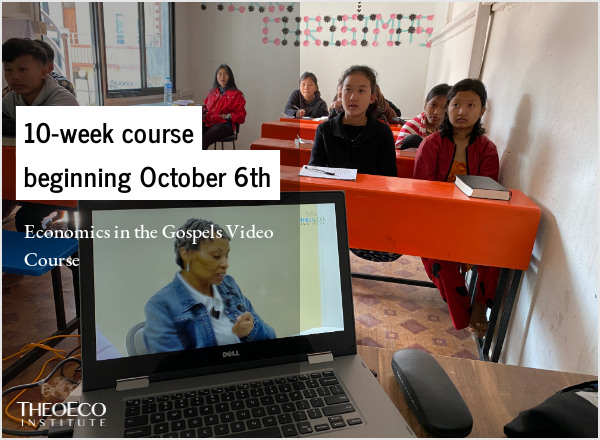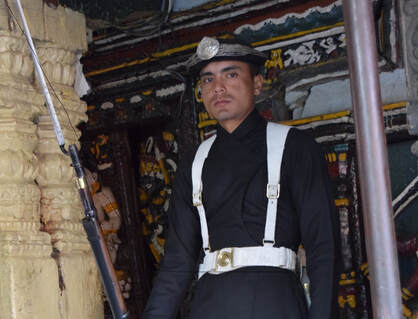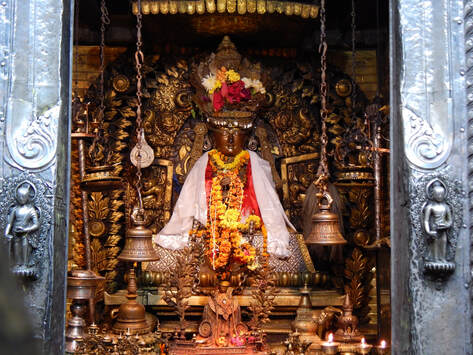 Fall classes begin October 6th through December 23rd introduced virtually by study author/instructor Steve Richards.
Become a co-host Participate in the Economics in the Gospels virtual study group with your group via Zoom and generate funds - and fellowship - for your organization. For more click here.
0 Comments
 Today we are making available the next installment of our new online video series for Economics in the Gospels. Peace is a complicated subject in the Gospels. For instance, Jesus is commonly depicted as the “Prince of Peace”. Intriguingly though he often speaks of how he is not here to bring peace at all... Matthew 10:34 “Do not think that I have come to bring peace to the earth. I have not come to bring peace but a sword. The economy we see in the Gospels seems familiar in many ways. Perhaps that is why the narrative, the stories, the people, the situations, the images seem relevant through the ages. It’s easier in some ways to notice the things that aren’t there. But what we see is that much of what we take for granted was there, albeit in more simple states: Agriculture? Check. Housing? Check. Lawyers? Of course. Lamps, musical instruments, tables, chairs, curtains, garments, jars, spices, servants, linens, coins, plenty of bread, wine, etc. are all in there. Go outside and you’ll be missing cars, planes, superhighways, skyscrapers, automated factories, modern hospitals, construction equipment, and a million other things. What you would see if you had wandered around with Jesus would be a world with lots of housing, roads, boats, big buildings, crop filled fields, markets, vineyards, etc. Jesus and his disciples appear to have lived simply. From what we can read He lived on a diet of bread, fish, water and wine, with an occasional fig. He was certainly not one to avoid a feast however. As pigs and other livestock are mentioned we can extrapolate that there was meat in the diet so, again, it’s not hard to place oneself in the time - and feeling right at home. Eggs are also mentioned so a breakfast of eggs, bacon and toast could well have been put together. Jesus and his crew apparently walked just about everywhere and took boats when a significant distance made it practicable. I’m reminded of a quote of Thoreau’s: “I have travelled quite extensively, in Concord.” He loved to hang out with friends in low places. He did not appear to break the laws of the land unless we count turning over the tables at the temple. He appeared to have no gainful employment and there is no record of him being paid a wage. It is often said he was a carpenter though there appears to be no record of him actually building anything physical. Jesus as a manager, we might be able to say, had the ultimate charismatic personality. He seemed to care less what people thought of him – and so too didn’t seem to care about making enemies. He was treated very harshly, but never reciprocated. Like many highly successful people of today, and certainly good salespeople, he liked to tell stories and was very good at it. Jesus seemed to have no problem with the economic factors of production of his day. He just didn’t seem to think them particularly important, at least not as compared to the metaphysical realm he usually spoke of. We can perhaps see the roots of our social safety net in the Gospels. Taking care of women and children especially were of the utmost importance to him. He repeatedly reassures the poor. Perhaps the two most obvious takeaways for a modern Capitalist is that the Gospels, and He, try to warn rich people that chasing a buck is most definitely not to be encouraged. One should instead try to take care of one’s soul and live in a loving way. Another takeaway one could construe, and probably the most important from a macroeconomic point of view: the Gospels would seem to argue for a “downsized“ way of living. Jesus certainly incorporates this way of thinking in his lifestyle and most of what he says, and the rest of the narrative seems to support this conclusion. For more information about the course click here. To view the video click here. For the study text click here. Economics in the Gospels Video Course: Offerings & Gifts, Taxes, Rich & Poor, Garments & Textiles9/5/2020  Today we are making available the next installment of our new online video series for Economics in the Gospels. The Gospel accounts start off with gifts to the baby and continue on with promises of gifts from God to his children. There are examples of gifts made at the altar. And what you give will be the measure received. Sacrifices were common in the Jewish world with burnt offerings being offered regularly. Tithing 10% is well established. There is little objection to taxes in the Gospels – they appear to be an accepted fact of life – just like today. Though there is a reference to them needing to be fair. Taxes were collected at the temple. Though it would appear that Jesus might feel he is exempt… Matthew 17:24 After they arrived in Capernaum, the collectors of the temple tax came to Peter and said, “Your teacher pays the double drachma tax, doesn’t he?” 17:25 He said, “Yes.” When Peter came into the house, Jesus spoke to him first, “What do you think, Simon? From whom do earthly kings collect tolls or taxes – from their sons or from foreigners?” 17:26 After he said, “From foreigners,” Jesus said to him, “Then the sons are free. Much of what the Gospels speak to surrounds the haves, and the have-nots. References abound both in direct and indirect mentions of the disadvantages the rich will have, and the relative advantages the poor will receive. Generally, being rich is seen as a disadvantage The Gospels are full of clothes, cloth, curtains, and the like. In the end the guards throw dice for Jesus clothes. In the Transfiguration, the whiteness of Jesus clothes is fundamental to the story and the event itself. In this, a most exceedingly famous passage, clothes are front and center … Matthew 7:15 “Watch out for false prophets, who come to you in sheep’s clothing but inwardly are voracious wolves. Cloaks are mentioned repeatedly in the Gospels. In particular, Jesus’ cloak has the ability heal. Linen is specifically mentioned throughout the Gospels. First, as the material Jesus is wrapped in and all that is left behind after the resurrection. A young man dressed in a white robe tells the good news. The tearing of the temple curtain was the Gospel’s most pointed and poignant reference of God’s reaction toward the crucifixion. Matthew 27:51 Just then the temple curtain was torn in two, from top to bottom. The earth shook and the rocks were split apart. In the continuation of this most famous of lessons, the coat is not to be missed. Luke 6:29 To the person who strikes you on the cheek, offer the other as well, and from the person who takes away your coat, do not withhold your tunic either. Finally, white appears to be the color for divine spirits. John 20:12 And she saw two angels in white sitting where Jesus’ body had been lying, one at the head and one at the feet. Next up: Peace and War, Take Aways For more information about the course click here. To view the video click here. For the study text click here. |
Archives
June 2024
Categories
All
|
TheoEco Institute is a 501(c)(3) nonprofit organization. Contributions to TheoEco in the United States are tax exempt to the extent provided by law.

 RSS Feed
RSS Feed